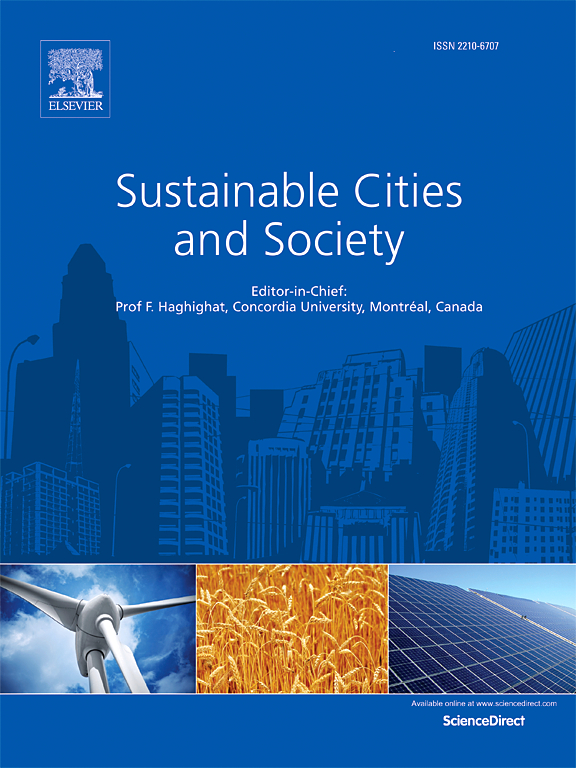High-resolution outdoor heat-risk modeling for city central areas with applications to Tokyo and Lyon
IF 10.5
1区 工程技术
Q1 CONSTRUCTION & BUILDING TECHNOLOGY
引用次数: 0
Abstract
Owing to climate change, urbanization, and population shifts, heat risks in cities are projected to rise. This work aims to introduce a flexible approach for mapping outdoor heat risks by individually constructing, normalizing, and combining its four key components – hazard, exposure, vulnerability, and adaptive capacity – as recommended by the International Panel on Climate Change. The methodology was demonstrated by constructing 500-m hourly-varying outdoor heat risk maps of elderly population over two city-central areas (Tokyo and Lyon) of distinct geophysical features and demographic conditions during a summer day in 2022. The hazard component was described using a 2-m simulation of heat-stress index (wet-bulb globe temperature), which accounts for urban surface details. Vulnerability, exposure, and adaptive capacity were then defined as functions of hourly 500-m population changes, open-space ratios, and proximity to health centers, respectively. During the selected dates in Tokyo’s and Lyon’s central areas, significant spatiotemporal variations emerged in daytime elderly heat risk due to their unique urban landscapes, local climates, and senior population mobility patterns. Meanwhile, reductions in elderly population movement resulted in low outdoor vulnerability despite the peak heat hazard condition during the noontime. This work highlights the usefulness of the proposed approach, the prevailing complexities of detailed risk mapping over city-central areas, and the utility potential of increasing high-quality geospatial datasets.
城市中心区高分辨率室外热风险建模在东京和里昂的应用
本文章由计算机程序翻译,如有差异,请以英文原文为准。
求助全文
约1分钟内获得全文
求助全文
来源期刊

Sustainable Cities and Society
Social Sciences-Geography, Planning and Development
CiteScore
22.00
自引率
13.70%
发文量
810
审稿时长
27 days
期刊介绍:
Sustainable Cities and Society (SCS) is an international journal that focuses on fundamental and applied research to promote environmentally sustainable and socially resilient cities. The journal welcomes cross-cutting, multi-disciplinary research in various areas, including:
1. Smart cities and resilient environments;
2. Alternative/clean energy sources, energy distribution, distributed energy generation, and energy demand reduction/management;
3. Monitoring and improving air quality in built environment and cities (e.g., healthy built environment and air quality management);
4. Energy efficient, low/zero carbon, and green buildings/communities;
5. Climate change mitigation and adaptation in urban environments;
6. Green infrastructure and BMPs;
7. Environmental Footprint accounting and management;
8. Urban agriculture and forestry;
9. ICT, smart grid and intelligent infrastructure;
10. Urban design/planning, regulations, legislation, certification, economics, and policy;
11. Social aspects, impacts and resiliency of cities;
12. Behavior monitoring, analysis and change within urban communities;
13. Health monitoring and improvement;
14. Nexus issues related to sustainable cities and societies;
15. Smart city governance;
16. Decision Support Systems for trade-off and uncertainty analysis for improved management of cities and society;
17. Big data, machine learning, and artificial intelligence applications and case studies;
18. Critical infrastructure protection, including security, privacy, forensics, and reliability issues of cyber-physical systems.
19. Water footprint reduction and urban water distribution, harvesting, treatment, reuse and management;
20. Waste reduction and recycling;
21. Wastewater collection, treatment and recycling;
22. Smart, clean and healthy transportation systems and infrastructure;
 求助内容:
求助内容: 应助结果提醒方式:
应助结果提醒方式:


